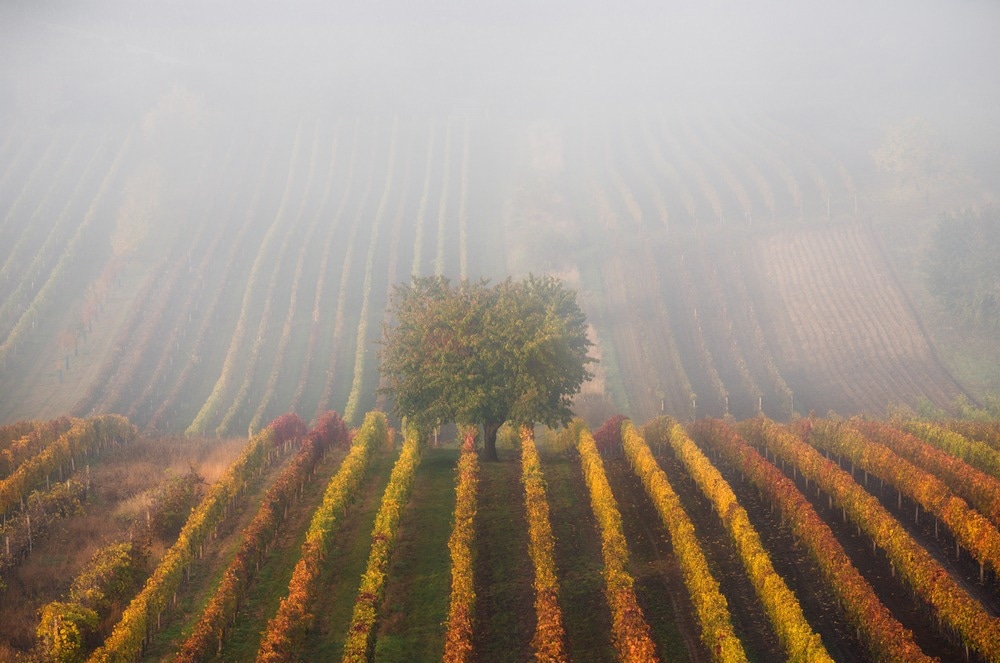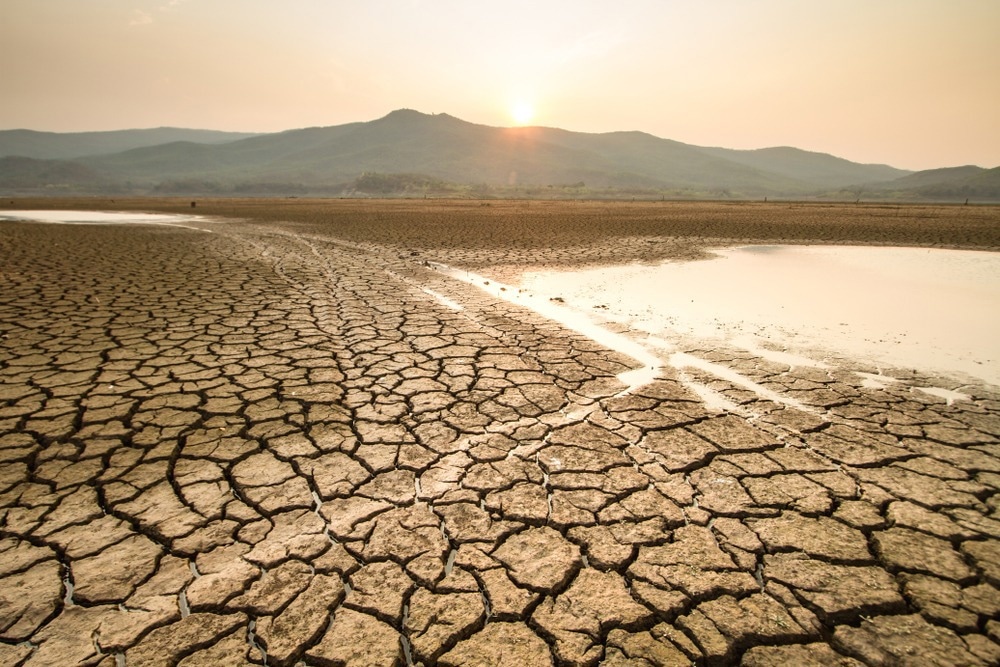As climate change exacerbates global droughts and water scarcity, fog harvesting is emerging as a sustainable solution to increase freshwater supply.

Image Credit: Vlad Sokolovsky/Shutterstock.com
Recent evaluations suggest that progress toward achieving Sustainable Development Goal Six (access to water and sanitation for all) by 2030 is lagging. This is particularly concerning for water-scarce countries, where traditional water resources, such as snowfall, rainfall, river runoff, and groundwater, prove inadequate to meet the growing freshwater demand.
Therefore, the quest for unconventional water sources becomes crucial to bridge the widening gap between water demand and supply.
Among these sources, harnessing water from fog emerges as an under-explored yet promising option for community-level water supply. First explored in the early 1900s by Dr. Marloth in South Africa, fog harvesting has since evolved into a self-sufficient solution for remote, water-scarce areas.
What Is Fog Harvesting and How Does it Work?
Fog harvesting involves capturing the tiny droplets of water vapor suspended in fog and converting them into a usable source of drinkable water. The system is passive, relying on wind to push the fog through the nets. As fog passes through the mesh, tiny droplets accumulate, coalesce into larger drops, and drain into gutters. The water then flows through pipes into storage tanks for future use.
The technology is well-suited for arid and semi-arid mountainous areas along coastal regions where seasonal or year-round fog is common. This includes regions such as western South America, the southwestern coast of Africa, the Arabian Peninsula, Mexico, and parts of the United States.
The optimal conditions required for fog harvesting are:
- Persistent onshore winds: Consistent winds (2 to 12 m/s) blowing from the ocean inland are needed to push fog through the system.
- Sufficient altitude and topographic relief: Elevated sites (400 m to 1000 m above sea level) along coastal mountains or plateaus allow the system to intercept fog and low-hanging stratocumulus clouds.
- Clear upwind fetch: An unobstructed upwind path over several kilometers is necessary to ensure that fog can reach the collectors without impediments.
How Fog Harvesting Can Help with Water Scarcity?
Fog harvesting offers a sustainable supplemental water source for communities struggling with severe seasonal or perennial water scarcity. It provides 5.3 to 13.4 liters per m2/day, depending on the season, fog liquid water content, droplet size distribution, mesh characteristics, and wind speed.
The simplicity of passive mesh net design makes fog harvesting cheaper to install and maintain compared to alternatives such as desalination plants or shipping in water. The negligible environmental impact of the harvesting process, relying solely on wind for power, also qualifies it as a clean technology.

Image Credit: Piyaset/Shutterstock.com
Recent Innovations in Fog Harvesting Technology
Ongoing research, focused on improving efficiency and expanding implementation, continues to enhance fog harvesting technology.
Photocatalytic Mesh Coatings for Simultaneous Collection and Treatment
In response to air pollution contaminating fog in urban and industrialized areas, UC Berkeley and ETH Zürich engineers have designed nanoengineered steel mesh with polymer and photocatalytic titanium dioxide coating to harvest and purify fog water simultaneously.
The polymers enhance the collection of water droplets on the mesh, trickling them down into a container, while the titanium dioxide acts as a catalyst to break down organic pollutants in the droplets. The photocatalytic coating functions passively when exposed to sunlight and removes chemical pollutants around the clock.
The technology was tested in a laboratory and a small pilot plant, demonstrating an 8 % water collection efficiency and more than 90 % breakdown of added organic compounds in artificially created fog.
Optimizing Water Drainage via an Aerodynamic Design
In a study published in Nature Physics, Princeton researchers discovered that water vapor drops on parallel fibers align when exposed to crosswinds, a phenomenon attributed to aerodynamic forces resembling boat wakes. This encourages faster droplet coalescence and quicker overall draining.
The researchers investigated the coalescence of multiple drops and observed that the combined drop gains sufficient weight to fall off the fiber. This finding emphasizes the significance of aerodynamic interactions in optimizing fog harvesting technology.
Wasserstiftung and Aqualonis Cloudfisher’s Global Impact
Aqualonis specializes in designing fog collectors that are easy to install, maintenance-free, carbon-neutral, and use food-safe materials to produce high-quality drinking water that meets WHO standards.
CloudFisher (now a trademark of WasserStiftung) is its most notable product, which features a fine-mesh net suspended within a steel frame and rubber expanders to maximize water collection.
In response to the persistent issue of wind damage affecting fog collectors in Southwest Morocco, Aqualonis partnered with Dar Si Hmad, a Moroccan NGO, to install CloudFisher units in the Anti-Atlas Mountains. This collaboration resulted in the world's largest fog harvesting system, yielding 6300 liters of water daily and benefiting 15 villages.
Aqualonis also collaborated with the German NGO p(e)d World in Tanzania to install CloudFisher collectors, providing clean water to approximately 25,000 people in 2021.
A Low-Tech Marvel for Water Sustainability in Colombia
Design studio Alsar Atelier and designer Oscar Zamora collaborated to create a fog harvester in Bogotá, Colombia, capable of collecting 200 liters of water per week for the local community.
The structure, commissioned by community leader Caesar Salomon, features a light steel frame wrapped in polisombra, a widely available plastic fabric.
The construction, completed in five days without the use of heavy machinery, demonstrates low-tech construction innovation and promotes sustainable methods for harvesting clean water.
Future Outlook
The global demand for freshwater continues to rise, exacerbated by overpopulation, urban migration, pollution, and greenhouse gas emissions. Approximately 2 billion people face water stress daily, with 1.1 billion, mostly residing in urban slums or remote arid areas, having access to only 5 liters daily.
Considering these challenges, fog harvesting technology emerges as a promising avenue for sustainable water resource management and augmentation in areas faced with acute water scarcity areas.
Despite being a green technology with low operational costs, its viability depends on topographic and meteorological conditions, requiring subsidies for low-income communities.
Overcoming these challenges is crucial for the widespread adoption of fog harvesting, facilitating the provision of sustainable freshwater to vulnerable, water-scarce regions around the globe.
See More: Fog Collecting and the Future of Reforestation
References and Further Reading
Nathans, A. (2023). Harvesting Water From fog, drop by drop. [Online] School of Engineering and Applied Science Princeton. Available at: https://engineering.princeton.edu/news/2023/08/22/harvesting-water-fog-drop-drop.
Wilson, JL., Pahlavan, AA., Erinin, MA., Duprat, C., Deike, L., Stone, HA. (2023). Aerodynamic Interactions of Drops on Parallel Fibres. Nature Physics. doi.org/10.1038/s41567-023-02159-4.
Ellery, M. (2023). Scientists Develop Parallel Method for Fog Harvesting and Water Treatment. [Online] UC Berkeley. Available at: https://engineering.berkeley.edu/news/2023/08/scientists-develop-parallel-method-for-fog-harvesting-and-water-treatment/.
Ghosh, R., Baut, A., Belleri, G., Kappl, M., Butt, HJ., Schutzius, TM. (2023). Photocatalytically Reactive Surfaces for Simultaneous Water Harvesting and Treatment. Nature Sustainability. doi.org/10.1038/s41893-023-01159-9.
Dreith, B. (2023). Alsar Atelier and Oscar Zamora Create Bogotá Fog Catcher. [Online] Dezeen. Available at: https://www.dezeen.com/2023/04/19/alsar-atelier-fog-catcher-bogota/.
Qadir, M., Jiménez, GC., Farnum, RL., Trautwein, P. (2021). Research History and Functional Systems of Fog Water Harvesting. Frontiers in Water. doi.org/10.3389/frwa.2021.675269.
Klemm, O., et al. (2012). Fog as a Freshwater Resource: Overview and Perspectives. Ambio. doi.org/10.1007/s13280-012-0247-8.
Verbrugghe, N., & Khan, A. Z. (2023). Water Harvesting Through Fog Collectors: A Review of Conceptual, Experimental and Operational Aspects. International Journal of Low-Carbon Technologies. doi.org/10.1093/ijlct/ctac129
Qadir, M., Jiménez, GC., Farnum, RL., Dodson, LL., Smakhtin, V. (2018). Fog Water Collection: Challenges Beyond Technology. Water. doi.org/10.3390/w10040372
The Climate Technology Centre and Network. (2023). Fog Harvesting. [Online] The Climate Technology Centre and Network. Available at: https://www.ctc-n.org/technologies/fog-harvesting.
Disclaimer: The views expressed here are those of the author expressed in their private capacity and do not necessarily represent the views of AZoM.com Limited T/A AZoNetwork the owner and operator of this website. This disclaimer forms part of the Terms and conditions of use of this website.